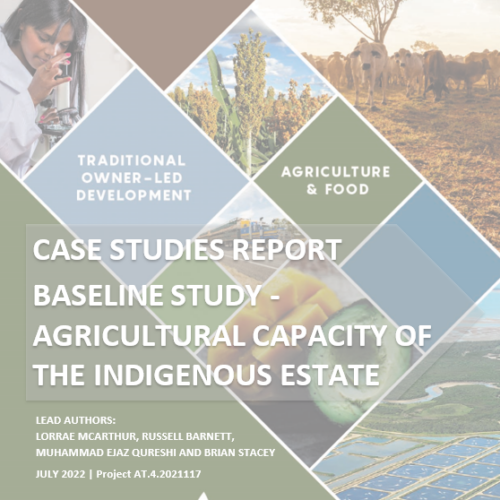
- Author McArthur, L., Barnett, R., Qureshi, M.E., Stacey, B.
- Publish date 18 August 2022
- Type Case study
- ISBN 978-1-922437-38-9
- Documents
- First Nations led business development
- Strategic policy development
Summary
The five case studies within this report form a significant component of the Agricultural Capacity of the Indigenous Estate baseline study and were selected by the Project Steering Committee to provide, as far as practicable, representation of First Nations participation in primary industries across Australia and across the primary production activities, including cattle production, plant cultivation and fisheries.
Analysis of the case studies was based on identifying success factors for First Nations participation in agricultural economies premised on shifting the narrative in public policy to better engaging First Nations in primary industries.
Overall, the analysis identifies that First Nations primary production industries are diverse, increasingly financially sustainable and delivering significant cultural, environmental and social benefits to local First Nations communities and the national economy.
Modelling shows 10% of the Indigenous Estate is highly suitable for agricultural development, particularly along the northern Australian coastline, the east coast and the south west of Western Australia, with areas of moderate to high suitability in all states. This research confirms that there are opportunities to increase First Nations participation in primary industries.
In summary, improving the quality of data and ease of access to data concerning the Indigenous estate and Indigenous primary industries is recommended to improve decision making relating to expansion of the sectors’ development. Developing a portfolio of First Nations primary industry case studies is also recommended to support market investment and strategies of government agencies and industry groups. However, policy development regarding First Nations participation in primary industries must ultimately be inclusive and informed by First Nations organisations.
The full complement of recommendations to enhance First Nations participation in those identified primary industries is available in the Activating the Indigenous Estate situational analysis report.

